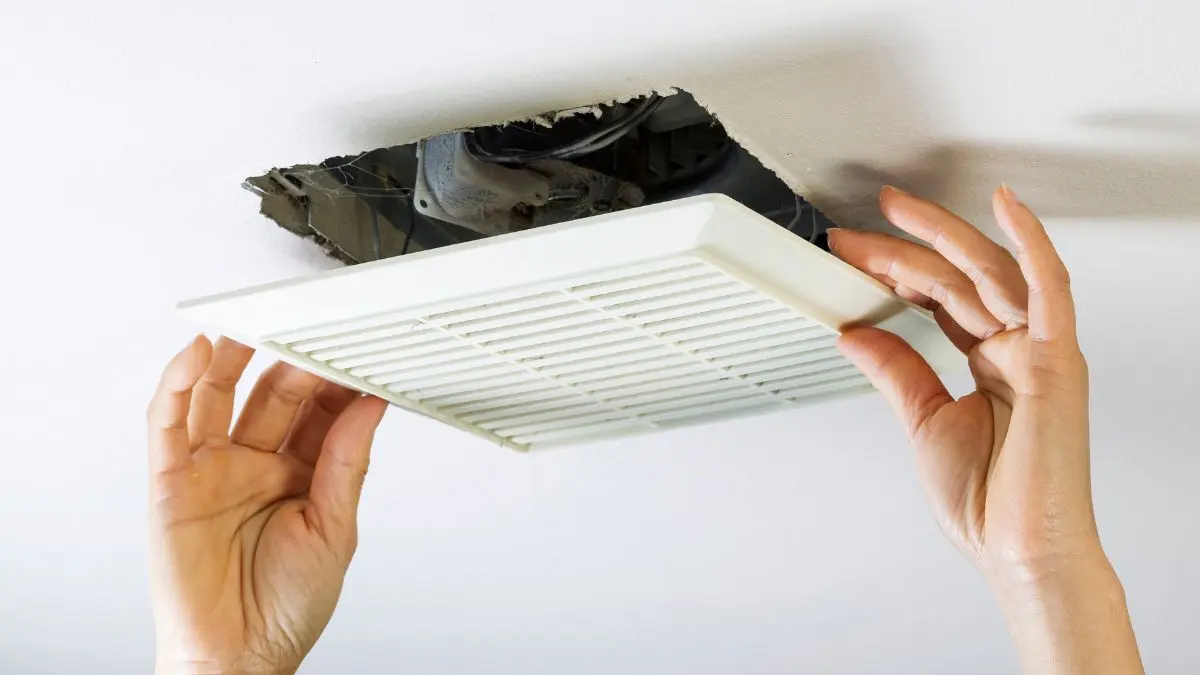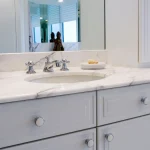When it comes to keeping your bathroom fresh and free of moisture, a good exhaust fan is key. But if you’ve got multiple bathrooms in your home, venting multiple bathroom exhaust fans efficiently can be a bit tricky.
Whether you’re a homeowner or a contractor, understanding the best methods for proper ventilation is crucial to avoid problems like mold, humidity damage, or even costly repairs down the road.
You need to know about setting up an efficient ventilation system for multiple bathrooms. From choosing the right ductwork to making sure you’re saving energy, we’ve got you covered. Whether you’re planning a DIY project or consulting with a professional, a little knowledge goes a long way!
Planning Your Ventilation System

Before jumping into the installation of your bathroom exhaust fans, proper planning is essential. Here are a few key things to consider when venting multiple bathroom exhaust fans:
Assess Your Bathroom Layouts
The first step is to assess the location of each bathroom in your home. Are they close together or spread out? If your bathrooms are relatively close, you may have the option to combine the venting into a single system. On the other hand, if they’re far apart, individual venting might be the smarter option to avoid long duct runs.
Choose the Right Fan Size
Not all bathrooms are the same size, and neither are their ventilation needs. A smaller powder room will require a different exhaust fan than a large, steamy master bathroom. To choose the right fan size, you’ll need to look at the CFM (cubic feet per minute) rating, which indicates how much air the fan can move. As a general rule of thumb, a fan should move about 1 CFM per square foot of the bathroom.
For example, a 100-square-foot bathroom would need a fan rated for at least 100 CFM. Planning this step carefully ensures that your system is both effective and energy-efficient.
Think About DIY vs. Professional Help
If you’re comfortable with basic home improvement tasks, installing a bathroom exhaust fan might seem straightforward. However, when venting multiple fans or setting up shared ductwork, things can get complicated. Consulting with a professional contractor can help you avoid pitfalls, especially if you’re dealing with longer duct runs or roof penetrations.
Ductwork Options for Multiple Exhaust Fans
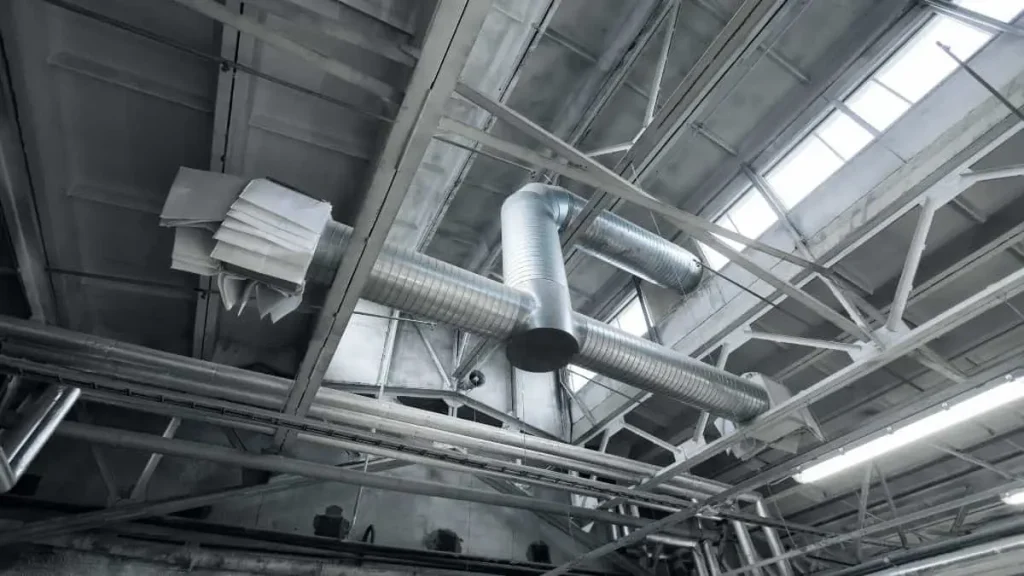
Once you’ve planned the layout and fan sizes, the next step in venting multiple bathroom exhaust fans is choosing the right ductwork. The way you set up your ducts can significantly impact the efficiency and effectiveness of your system.
Single Duct vs. Multiple Ducts
You have two main choices: vent each bathroom fan with its own duct or combine them into a shared duct system.
- Individual Ductwork: This method involves running separate ducts from each fan to the outside of your home. While it’s the most efficient way to prevent air backflow and ensure each bathroom is vented properly, it does require more space and materials. However, if you have multiple bathrooms located far apart, this might be your best option.
- Shared Ductwork: If your bathrooms are close together, a shared duct system can save you time and money. In this setup, multiple fans connect to a larger, combined duct that vents outside. While this approach is more cost-effective and minimizes roof or wall penetrations, it can sometimes lead to airflow challenges if not done correctly, such as one fan pushing air into another bathroom.
Material Choices for Ductwork
Choosing the right duct material is another key decision. There are two main types:
- Flexible Ducting: Made from a wire coil covered in plastic, flexible ducts are easy to install, especially around corners. However, they can sag or create airflow resistance over time, which reduces efficiency.
- Rigid Ducting: These are usually made from metal and offer smoother airflow, making them more durable and efficient than flexible ducts. Although more difficult to install, rigid ducting is often the best choice for long-term performance.
When venting multiple bathroom exhaust fans, many contractors recommend using rigid ducting where possible for better airflow and fewer maintenance issues.
Visualizing the Layout
It’s helpful to sketch out your ductwork layout before starting. Consider the distance from each bathroom to the outside vent. The shorter and straighter the duct runs, the more efficient your system will be.
Read Also: Why Your Bathroom Fan Makes a High-Pitched Noise When Off
Ventilation Methods: Choosing the Right System
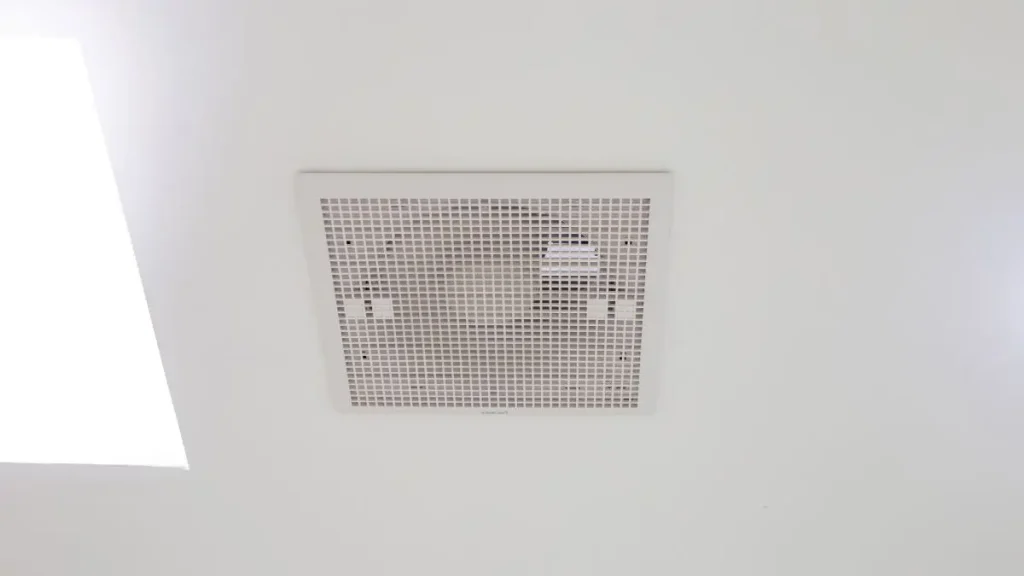
Now that you’ve got an idea of how the ductwork will look, it’s time to decide on the ventilation method that works best for your home. There are a few ways to approach venting multiple bathroom exhaust fans, each with its own benefits.
Dedicated Venting for Each Fan
The simplest method is to have each fan vent directly outside through its own duct. This eliminates the risk of backdraft (where air from one bathroom could flow into another), and ensures that each bathroom is ventilated independently.
While this method is the most reliable, it does require more space for individual ducts, and you’ll likely need to make multiple penetrations in your roof or exterior walls.
Manifold System
A manifold system combines the exhaust from multiple bathroom fans into one larger duct that leads outside. This is a space-saving solution that reduces the number of roof or wall vents needed.
While convenient, the key here is to ensure the manifold is properly sized to handle the airflow from multiple fans. A system that’s too small can lead to poor ventilation or noisy operation.
For example, in a home with two bathrooms close together, a manifold system can efficiently route the air through a single vent, saving installation time and material costs.
Fan-Damper Combination
If you decide to share ductwork, installing dampers is crucial. Dampers act as one-way valves that prevent air from flowing back into other bathrooms. Without dampers, you could end up with one fan pushing moisture or smells into an adjacent bathroom, which is definitely not ideal!
Each fan connects to a shared duct, but backdraft dampers are installed to ensure air only flows in one direction – out.
Related Read: How to Replace a Bathroom Light with a Fan Light Combo
Potential Challenges and How to Overcome Them
Venting multiple bathroom exhaust fans can be a straightforward process, but it’s not without its challenges. Here are some common issues you might face and tips on how to address them:
Long Duct Runs
One of the most common challenges when venting multiple bathroom exhaust fans is dealing with long duct runs. The longer the duct, the harder your fan has to work to push air out of the bathroom. This can lead to poor ventilation, increased energy use, and wear on the fan itself.
Solution: Keep your duct runs as short and straight as possible. If long runs are unavoidable, consider upsizing the fan to ensure adequate airflow or using rigid ducting to reduce friction. Installing a booster fan along the duct run can also help maintain airflow over long distances.
Backdraft Problems
If you’re using shared ductwork for multiple fans, there’s a risk of backdraft, where air from one bathroom flows into another. This can bring moisture, odors, or even stale air into the wrong bathroom—definitely something you want to avoid!
Solution: Always install backdraft dampers. These one-way valves prevent air from flowing back into other bathrooms, ensuring that each fan only vents air out. Make sure the dampers are properly installed and sized for your system.
Inadequate Fan Size
Choosing the wrong fan size is another challenge. If your fan isn’t strong enough, it won’t be able to move enough air, leading to humidity buildup and poor ventilation. On the flip side, a fan that’s too powerful can be noisy and consume more energy than necessary.
Solution: Select the right fan based on the CFM (cubic feet per minute) rating needed for each bathroom. The general guideline is to choose a fan that moves 1 CFM per square foot of bathroom space. For larger bathrooms or those with high humidity (like those with multiple showers), you may want to increase this capacity.
Roof Penetrations and Water Leaks
If your ventilation system requires multiple roof penetrations, there’s always a risk of water leaks, especially if the vents aren’t properly sealed. Over time, these leaks can cause damage to your attic, insulation, or ceilings.
Solution: Whether you’re installing individual ducts or a shared vent system, make sure all roof or wall penetrations are properly sealed with waterproof flashing. It’s also a good idea to use vent caps that are designed to prevent rainwater from entering the system.
Noise Issues
Multiple fans running simultaneously can generate a lot of noise, especially if the ductwork is too narrow or improperly insulated. This can make using your bathrooms less pleasant, especially in quiet areas of the home like bedrooms.
Solution: To reduce noise, use larger, rigid ducts and consider installing inline fans, which are mounted farther away from the bathroom. Insulating the ductwork can also help dampen sound. Additionally, look for exhaust fans that are specifically designed to operate quietly.
Tips for Energy Efficiency
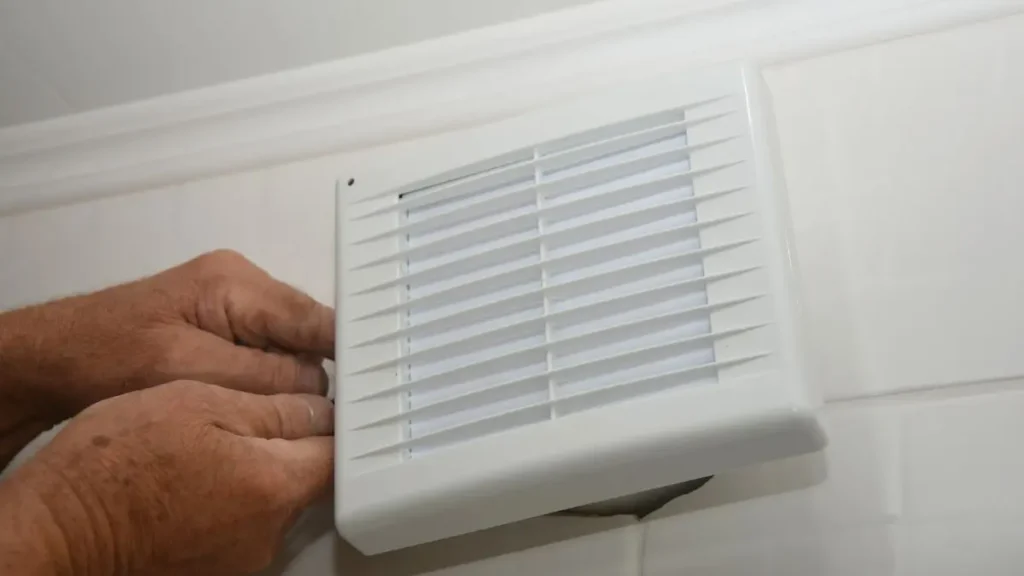
When venting multiple bathroom exhaust fans, energy efficiency is a key consideration—both for keeping your utility bills low and for reducing the environmental impact of your home. Here’s how you can optimize your ventilation system for energy savings:
Install Timer Switches or Motion Sensors
One of the easiest ways to make your exhaust fans more energy-efficient is by installing timer switches or motion sensors. Many people forget to turn off their bathroom fans after using them, which wastes energy and shortens the life of the fan. Timer switches allow the fan to run for a set amount of time before shutting off automatically, ensuring you’re only using it when needed.
Tip: Motion sensors can automatically turn on the fan when someone enters the bathroom and shut it off after a period of inactivity. This is a great way to ensure the fan is used only when necessary, without relying on anyone to remember.
Choose Energy-Efficient Fans
Not all exhaust fans are created equal, and some are more energy-efficient than others. Look for fans with the ENERGY STAR label, which use up to 60% less energy than standard models. These fans often feature more efficient motors and better airflow designs, helping you save money on electricity in the long run.
Seal and Insulate Ductwork
Leaky or uninsulated ductwork can cause energy loss as heated or cooled air escapes through gaps. This means your HVAC system has to work harder to maintain a comfortable temperature, which increases energy consumption.
Tip: Make sure all duct connections are tightly sealed and consider adding insulation around ducts that run through unconditioned spaces, like attics or crawlspaces. This will help prevent energy loss and improve the overall efficiency of your system.
Use Heat Recovery Ventilation (HRV)
If you’re serious about energy efficiency, you might want to consider installing a Heat Recovery Ventilator (HRV). An HRV system exchanges stale, moist air from your bathrooms with fresh outdoor air, while recovering heat from the outgoing air. This helps maintain indoor temperatures without wasting energy.
Regular Maintenance
Even the most energy-efficient system can lose its edge if not properly maintained. Over time, dust and debris can clog your exhaust fans and ducts, causing them to work harder and use more energy.
Tip: Clean the fans and ducts at least once a year to keep them running smoothly. If you notice that a fan isn’t working as efficiently as it once did, it might be time to replace it.
Addressing potential challenges and focusing on energy efficiency, you’ll not only create a well-ventilated home but also save on energy costs in the long run. In the next section, we’ll recap the key takeaways and offer some final tips for keeping your bathroom ventilation system in top shape.
Recommended: Vent a Bathroom Fan Through the Roof
Legal and Building Code Considerations
Before venting multiple bathroom exhaust fans, it’s essential to ensure your plans comply with local building codes. Proper ventilation isn’t just a good idea—it’s often a legal requirement to maintain a safe, healthy, and structurally sound home.
Ventilation Code Requirements
Most building codes require bathroom exhaust fans in any bathroom that doesn’t have an operable window. Even if windows are present, exhaust fans are still highly recommended to effectively remove moisture and prevent issues like mold growth or structural damage. When planning your system, ensure the following:
- Minimum Fan Capacity: Many local codes require bathroom fans to have a minimum airflow rating, often measured in CFM (cubic feet per minute). For example, a typical requirement might be a fan rated at 50 CFM for a small bathroom.
- Duct Sizing and Placement: Building codes often specify the required duct size based on the fan’s airflow rating. Undersized ducts can cause airflow restrictions, reduce the fan’s effectiveness, and even lead to code violations.
- Vent Location: Most building codes dictate that bathroom exhaust fans must vent to the outside, not into attics, crawlspaces, or other interior areas. This ensures that moist air is expelled from the home, rather than being trapped in enclosed spaces where it could cause damage or create a mold problem.
Tip: Be sure to check your local building code before starting your project. While national codes (like the International Residential Code) provide a general framework, local regulations can differ.
Permit Requirements
In many areas, installing or modifying bathroom exhaust systems requires a building permit. Even if you’re planning a DIY project, obtaining the proper permits ensures that your installation is inspected and complies with safety standards.
Failing to do so could result in fines or issues during future home inspections, especially if you plan to sell your house.
Tip: Always consult your local building department to see what permits are needed. This can save you from potential headaches down the road and ensure your system meets all legal requirements.
DIY or Hire a Pro?
When it comes to venting multiple bathroom exhaust fans, you may wonder whether this is a DIY-friendly project or something that requires a professional touch. The answer largely depends on your skill level, the complexity of the project, and how comfortable you are working with ductwork, electrical wiring, and building codes.
When DIY Makes Sense
If you have basic home improvement skills and are comfortable with small projects, you might be able to tackle installing or upgrading a bathroom exhaust fan on your own—especially if it’s just one fan with a simple, straightforward duct route.
Benefits of DIY:
- Cost Savings: One of the main reasons homeowners opt for a DIY approach is the potential to save on labor costs. By handling the project yourself, you’ll only need to pay for materials like the fan, ductwork, and vent caps.
- Simple Installations: Installing a fan in a single bathroom with an existing duct system is often manageable for an experienced DIYer. If you’re simply replacing an old fan with a new one of the same size and vent configuration, the job might be relatively easy.
Challenges of DIY:
- Code Compliance: As mentioned earlier, building codes are critical when it comes to proper ventilation. If you’re not familiar with your local codes, it’s easy to make a mistake that could lead to costly fixes or penalties later on.
- Roof Penetrations: If your installation requires new duct runs or additional roof penetrations, it might be more complex than a typical DIY project. Improperly installed roof vents can lead to leaks, water damage, or poor ventilation.
When to Hire a Pro
If the idea of cutting into your roof or running ducts through multiple bathrooms sounds overwhelming, hiring a professional contractor is likely your best bet. Venting multiple bathroom exhaust fans requires careful planning and expertise, especially in multi-story homes or homes with complex layouts.
Benefits of Hiring a Professional:
- Expertise: A licensed HVAC contractor or electrician will have the knowledge and experience to ensure your system is installed properly and up to code. They can handle tricky installations, such as shared ducts or long duct runs that require careful planning.
- Time Savings: What might take you several weekends to complete, a professional can usually do in a matter of hours. This can be a big benefit if you’re looking to get the job done quickly and avoid disruptions.
- Warranty and Insurance: Many contractors offer warranties on their work, and hiring a professional ensures that the work is covered by their insurance. This can give you peace of mind in case anything goes wrong during the installation process.
Hybrid Approach: DIY + Professional Help
For some homeowners, a hybrid approach works best. You might handle the simpler parts of the installation, like purchasing the fans or prepping the area, while leaving the more complex aspects, like electrical wiring or roof penetrations, to a pro.
Tip: When working with a contractor, make sure they are licensed and insured, and don’t hesitate to ask for references or look up reviews online.
Weighing the pros and cons of DIY versus hiring a professional, you can make the right choice for your project. If you’re comfortable with the scope of work and the potential challenges, a DIY project might be a rewarding and cost-saving endeavor.
However, if the project feels too complex or risky, bringing in a pro ensures the job is done right the first time.
Conclusion
Creating an efficient system for venting multiple bathroom exhaust fans is essential for maintaining good indoor air quality and preventing long-term damage from excess moisture.
With careful planning, choosing the right ductwork, and selecting a suitable ventilation method, you can ensure your bathrooms stay fresh and mold-free.
Whether you opt for a DIY approach or decide to hire a professional, understanding the key aspects of venting multiple exhaust fans—like proper duct sizing, legal considerations, and energy-efficient strategies—will lead to a successful installation.
Don’t forget to review local building codes and consider consulting an expert if your project involves complex ductwork or roof penetrations.

